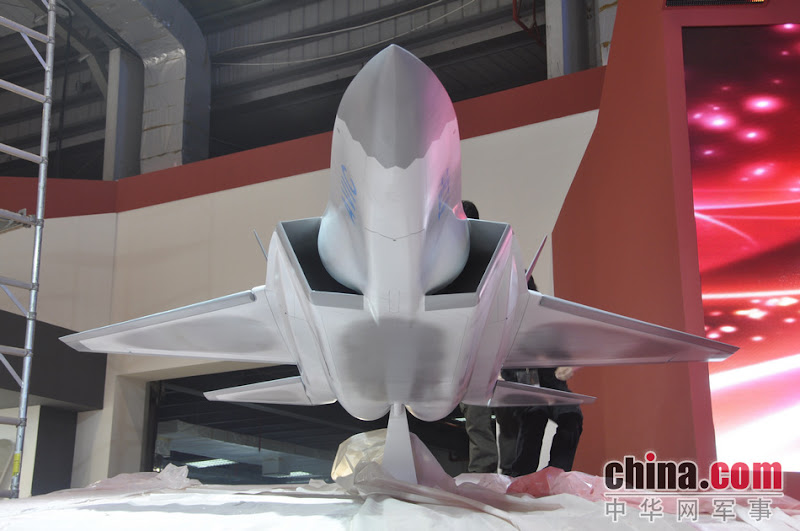Don't get taken by simple engine thrust numbers.
It is the weight of the engine for the thrust produced and acceleration to reach the full military thrust that is important.
In this field it is yet to be proven that chinese have surpassed the french or even the indian k-9 standrads despite all the hoopala over the J-20/31.
As it is always easy to hide the engine weight figures and blindly state the thrust figure is a way to confuse people.
Unless one WS sits on the back of JF-17, you will never know.The RD-russian version tech sitting on the back of JF-17 is the proof at the moment of the chinese tech is not as good or as bad as the french.
After 20 years of research , GTRE kaveri produces about 75 kn at sea level.It weighs near 1100 kg or so.
our figure will reach TWR of close to 7 in our first indigenous attempts with no frequency related vibration testing facility and no high altitude test facility.The lack of these facilities resulted in a delay of over 4 years to solve the blade throwing problem.
With snecma collabaration a 90 kn thrust seems possible with further reduction in weight by 100 kgs as per some open source estimates.
So our figure will reach TWR of close to 9 for the jet engine.
It chinese members post these figures it will lead to more informed discussion.
If you want the figures for FRENCH you can ask any body it is 10.
The whole world knows about french engine tech with 2000 mirages exported world wide.
The IAF once anted add extra 126 mirages to it's fleet. So everyone here knows about the level of french engine tech.
Shenyang J-15 - Wikipedia, the free encyclopedia
The J-15 is reported to use different avionics and systems than the Su-33, and uses Chinese-developed technologies, and features various upgrades such as AESA radar, radar absorbent material, MAWS, IRST, composite, and new electronics.[15]
China Signpost believes the J-15 "likely exceeds or matches the aerodynamic capabilities of virtually all fighter aircraft currently operated by regional militaries, with the exception of the U.S. F-22 Raptor"[16], alleging that the J-15 possesses a 10% superior thrust to weight ratio and a 25% lower wing loading than the F/A-18E/F Super Hornet[16].
However, Hu Siyuan of the National Defense University PLA China has said that "the current weak point of the J-15 is its Russia-made Al-31 engines which are less powerful than that of the American F-35 fighter".[17]
This is the reality behind the bluster.
You can go here and see what the chinese are doing
http://airforceworld.com/pla/english...ter-china.html
And more in the above site,
Similarly Indians can put a fancy name on our SUKHOI-MKI and call it our total indigenous product.
but since it is a democracy, such frauds cannot be concealed here.
Shenyang WS-10 - Wikipedia, the free encyclopedia
According to an interview publicised in January 2007 with J-10 pilot Li Cunbao (æŽå˜å®), the J-10 had not yet been equipped with the domestic WS-10 engine, because although the WS-10 could match the performance of its Russian counterpart (the AL-31), there was a serious drawback; the WS-10 took longer to "spool up", i.e. there was a delay in reaching the same thrust output as the Russian engine.
WS-10A is reported to have 13,200 kilograms (29,000 lb) of thrust and a 7.5:1 thrust-to-weight ratio, making it comparable to the AL-31F turbofan. The WS-10A was first displayed in public at the 2008 Zhuhai Air Show.
So it is no where near the french tech on rafale.
Infact despite all the hoopla over 13o kn engine ,it is infact in the same level of TWR relatimg to KAVERI-(K-9 version)
With this engine overweight J-20 is a sitting duck once it's stealth cover is blown
Atleast every one knows the k-9 has at last made this much progress concretely and high altitude trials in russia succeeded at this level of thrust.
The GTRE is asking for mating k-9 with tejas.
But no body is interested because these 7 level of TWr is practically not useful in military jet engines of today.
So we are going for a JV with snecma for close to 10 TWR level.
The present model of J-20 that is flying is flying with AL-31 FP russian engine with the TWR level of 7.8
The TWR level the RD-93 engines on the J-31 or whatever it is will be wprse than that.
So flying a few black coloured airframes won't upgrade china to 5th gen plane maker level.
Chinese are in the same league as K-9, even that is suspect as no authoritative figures of weight of the engine is known.
We may reach TWR of 10 with snecma JV.The chinese won't reach that level in the near future.
So indian AMCA if configured properly with an engine of TWR 10 or more it will be more than a match for the chinese ones.

















